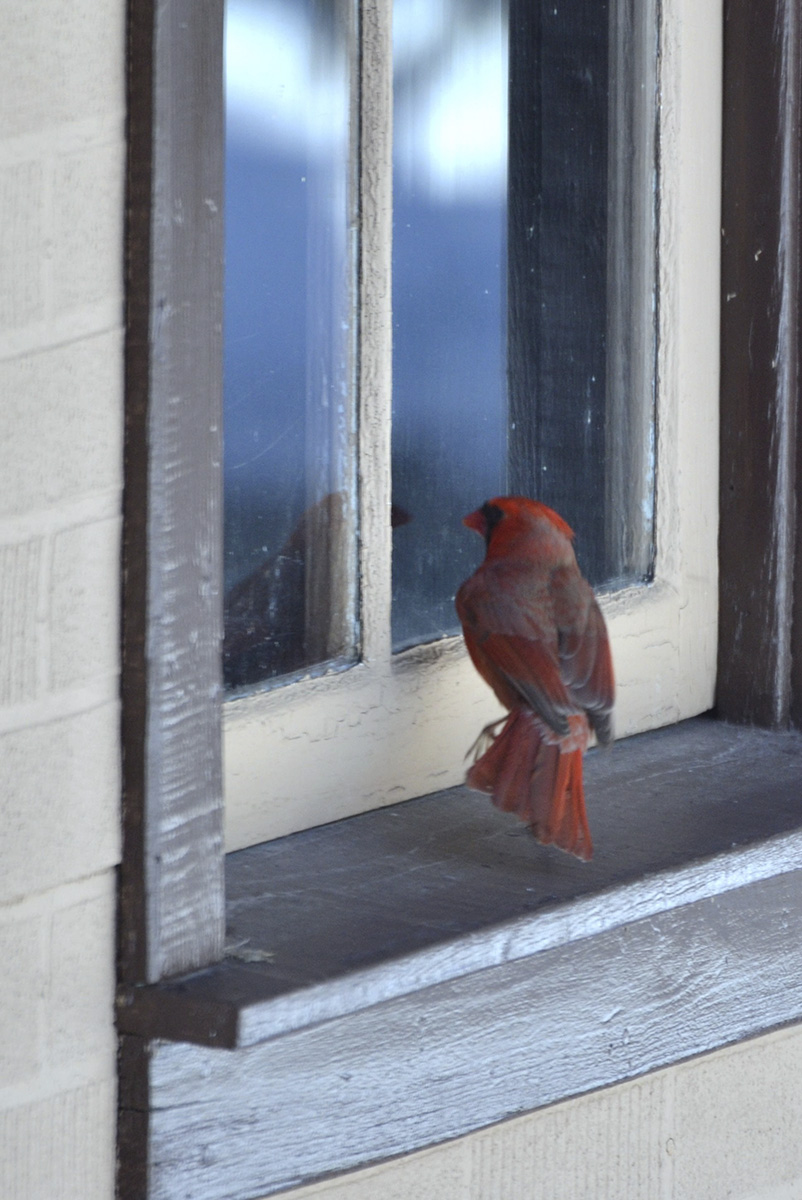
By Soni Cochran, Extension Associate, Lancaster Co.
The 2019 spring equinox in the Northern Hemisphere is Wednesday, March 20 at 4:58 p.m. CT. By the first day of spring, some birds have already started staking out their territories and seeking out mates. Spring is when animals are focused on mating and rearing their young. When it comes to birds, some species have behaviors that may be annoying or even frightening.
BIRDS ATTACKING WINDOWS
One of the most common calls we get in spring is about birds “trying to get in homes” by banging on windows. Rest assured, the birds aren’t trying to get into your home or business. In early spring, male birds are trying to establish their territories. When you observe robins in your yard or park this spring, you’ll see males chase one another and even fight as they establish these territorial boundaries. Once boundaries are established, males are constantly on the watch for invaders.
So why are they banging on windows? They see their own reflection which they think is “an invader.” I’ve watched robins, cardinals and sometimes American Goldfinch attack their reflection in windows. Sometimes females will join in on these attacks. Small songbirds aren’t the only birds who are establishing territories. I also get calls from businesses trying to cope with crows attacking their reflections in windows on buildings and on vehicles.
What can you do? You have to figure out how to eliminate the reflection on the windows the birds are attacking. In most cases, birds have certain windows they bang against depending on where the sun hits and their territorial boundaries. You can try putting up sheer cloth, crinkled plastic wrap on the inside of the window. But if you can go outside and still see your own reflection in the window, you may have to put something on the outside. Scaring the birds won’t work and there are no repellents. Once the birds have established a nest and are raising young (yes, it will be a few weeks), the birds may not have time to bother with the window reflections. And if you had this happen last year, plan on your birds being back this year so be ready.
Some birds strike windows because they see a reflection of the landscape and try to fly through. This is not the same as when birds attack their own reflection. To prevent window strikes, use decals, screens and other barriers to break up the landscape reflection in windows.
WOODPECKERS DRUMMING
Another common complaint we get from homeowners is about woodpeckers pecking on homes. There is a difference between a woodpecker searching for food or making a nesting cavity and spring drumming. Drumming is another territorial behavior. I love the sound, but I can understand how hearing this loud, rapid and rhythmic sound on your home at 6 a.m. can be alarming.
In nature, woodpeckers prefer a tree snag or hollow tree with the “best sound.” Consider your home and how many great places there might be to make a loud drum when no dead trees are available. Gutters, flashing, chimney caps and hollow home siding can be the perfect instrument for a woodpecker to loudly announce his territory and attract a potential mate.
One spring, I had a woodpecker who decided our second floor gutter was perfect for his drumming — which started before sunrise. Of course, this was also closest to the bedrooms. Fortunately, it didn’t take much for me to get up, go outside and clap my hands and he would take off. After a few days of interrupting his drumming, he went elsewhere. Drumming seldom results in any damage on wood or paint except for maybe paint being chipped off. A woodpecker does more damage when he/she is searching for insects or excavating a potential nest site.
If you have a persistent woodpecker who chooses your home for his “drum,” you can try to discourage him by deadening the sources of his drumming. You can use foam, fabric or other materials to ruin the sound for him. If needed, bird netting or hardware cloth can be put over the area. The good news is that drumming is “usually” just an early spring activity and once the birds are nesting, you won’t hear it again until next spring.
If you are not sure what drumming sounds like, give me a call and I’ll do my best to imitate the sounds for you.
FOR MORE INFORMATION
Nebraska Extension in Lancaster County has many resources about birds and other backyard wildlife at https://go.unl.edu/backyardwildlife